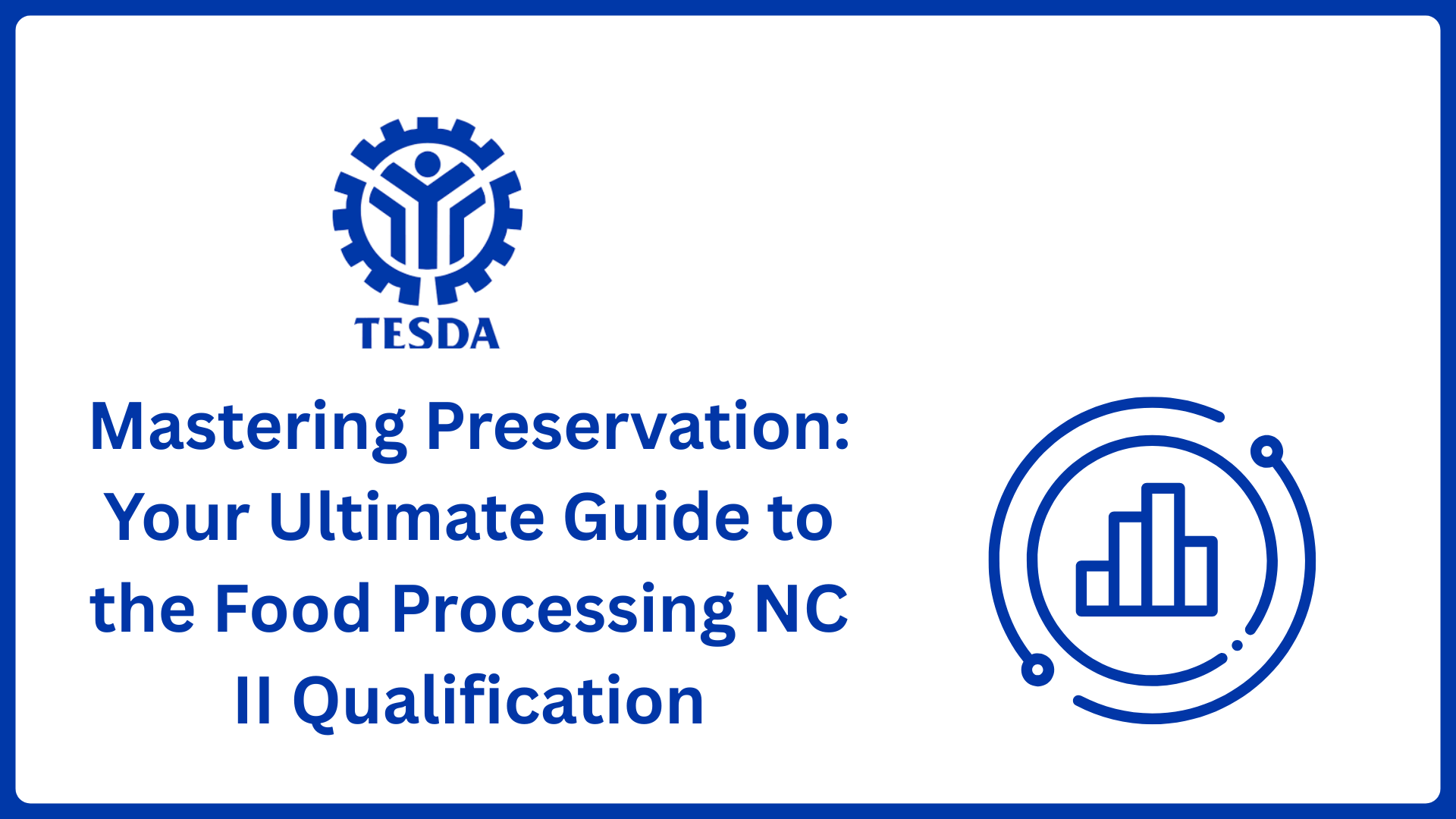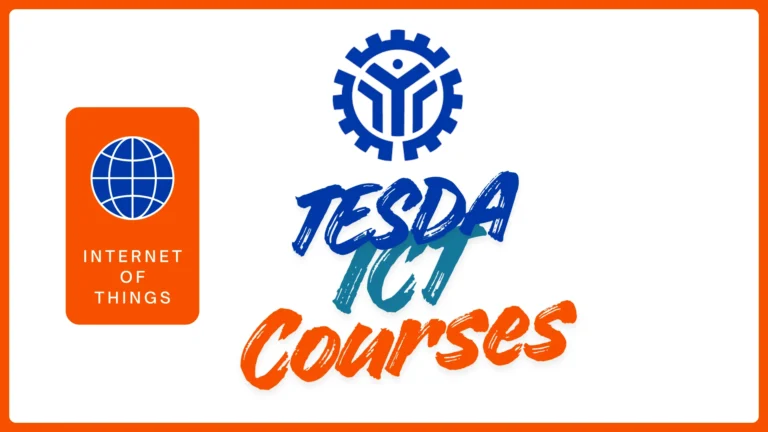Mastering Preservation: Your Ultimate Guide to the Food Processing NC II Qualification
This comprehensive guide delves into the Food Processing NC II curriculum, breaking down each core competency—from drying and dehydration to thermal application. We will explore what you’ll learn, the career opportunities it unlocks, and the fundamental principles that make these ancient preservation techniques relevant to modern food production.
Introduction to Food Processing NC II: Launching Your Career
The introductory module of the Food Processing NC II program is designed to build a strong foundation for aspiring food technicians. It’s more than just a first step; it’s an orientation to an entire industry.
What You Will Learn:
- Industry Overview: Gain a clear understanding of the vast food processing sector—its scope, significance, and the myriad of career opportunities available, from production line operators to quality control assistants.
- Work Environment: Get a virtual tour of what to expect in a food processing plant. This includes understanding standard operating procedures, Good Manufacturing Practices (GMP), safety protocols, and the importance of hygiene.
- Fundamental Principles: Learn the why behind the how. This section covers the core reasons for processing food: preservation (extending shelf life), safety (destroying pathogens), convenience, and adding value. You’ll be introduced to the basic concepts that underlie all methods, such as controlling water activity, pH, and temperature.
- Core Competencies Preview: The module provides a snapshot of the essential skills you will master throughout the Food Processing NC II program, setting the stage for hands-on learning.
This introductory component ensures you don’t just learn tasks; you understand the context and science behind them, making you a more competent and adaptable professional.
Core Competency 1: Processing Food by Drying and Dehydration
One of the oldest and most effective preservation methods, drying removes moisture, inhibiting the growth of microorganisms that cause spoilage.
What You Will Learn:
- The Science of Drying: Understand the fundamental principles behind drying and dehydration, including the concepts of water activity (aw) and how it relates to food stability.
- Practical Techniques: Gain hands-on skills in various drying methods, which may include sun-drying, oven-drying, and using mechanical dehydrators. You will learn to prepare different foods (fruits, vegetables, herbs, fish) for optimal results.
- Packaging and Storage: Learn the correct methods for packaging and storing dried products to protect them from moisture reabsorption, oxygen, light, and pests. This is crucial for maintaining quality and extending shelf life, a key skill for any food processing professional.
Core Competency 2: Processing Food by Fermentation and Pickling
This module explores the fascinating world of preservation through biochemical processes, harnessing the power of beneficial microorganisms.
What You Will Learn:
- The Art of Fermentation: Discover how microbial action is used to create a wide array of products. You’ll learn the processes behind making yogurts, wines, vinegars, and various fermented vegetables.
- The Science of Pickling: Master the techniques of pickling using vinegar and salt solutions. This includes learning how to make classic pickles through acidification, which prevents spoilage.
- Quality Control & Storage: Understand how the correct packaging and storage of fermented and pickled products are vital to halt further fermentation, maintain desired acidity, and ensure safety and quality.
Core Competency 3: Processing Food by Salting, Curing, and Smoking
This competency focuses on traditional methods primarily used for meat and fish, which draw out moisture and impart characteristic flavors.
What You Will Learn:
- Core Concepts: Dive deeper into the scientific principles of salting, curing, and smoking. You’ll learn about osmosis (moisture removal), the role of nitrites/nitrates in curing, and the antimicrobial properties of smoke.
- Hands-On Application: Develop the skills to process various products, such as cured hams, smoked fish, or salted meats, understanding the precise measurements and timing required.
- Preservation and Packaging: Learn the specialized techniques for packaging and storing these products, which often require controlled environments to prevent rancidity and moisture loss.
Core Competency 4: Processing Food by Sugar Concentration
This sweet preservation method is perfect for fruits, creating spreads and treats by reducing water activity through high sugar content.
What You Will Learn:
- Jam and Jelly Making: Master the craft of creating jellies, jams, marmalades, and preserves. This involves understanding pectin’s role, achieving the perfect gel set, and balancing sweetness with fruit acidity.
- Technical Skills: Learn to use refractometers to measure sugar concentration (Brix) and thermometers to track cooking temperatures precisely.
- Packaging for Quality: Discover how to properly package and store these high-sugar products to prevent crystallization, mold growth (even in low-water environments), and flavor loss.
Core Competency 5: Processing Food by Thermal Application
This modern module covers the most widely used industrial methods for preserving food, particularly canned and bottled goods, by controlling heat.
What You Will Learn:
- Equipment Preparation: Learn how to safely and correctly prepare the essential equipment for thermal application, including autoclaves (retorts), water bath canners, and pasteurizers.
- Key Processes: Develop skills in the two primary thermal methods:
- Pasteurization: Using mild heat to destroy pathogens and extend shelf life, commonly for juices, dairy, and some acidic foods.
- Pressurization/Canning: Using high heat under pressure to sterilize low-acid foods, making them shelf-stable for years.
- Aseptic Packaging and Storage: Understand the critical final steps of packaging and storing thermally processed products to ensure a hermetic seal and prevent post-processing contamination.
Career Pathways and Opportunities with Food Processing NC II
Earning a Food Processing NC II certification opens doors to a variety of in-demand roles within the food manufacturing sector, including:
- Food Processing Operator / Technician
- Production Line Worker
- Quality Control Checker
- Food Safety Assistant
- Small-Scale Food Entrepreneur (e.g., producing homemade jams, cured meats, or dried fruits for market)
Conclusion: Building a Foundation for a Future-Proof Career
The Food Processing NC II qualification is more than a list of modules; it’s a comprehensive journey through the fundamental techniques that sustain our global food system. By mastering these five core competencies—drying, fermenting, curing, sugar concentration, and thermal application—you gain not just practical skills, but a deep understanding of the science that makes them work.
This knowledge makes you a valuable asset to any food production company and empowers you to create safe, high-quality products. Whether you aim to join a major food corporation or start your own artisanal food brand, Food Processing NC II provides the essential, industry-recognized foundation for a successful and sustainable career.







